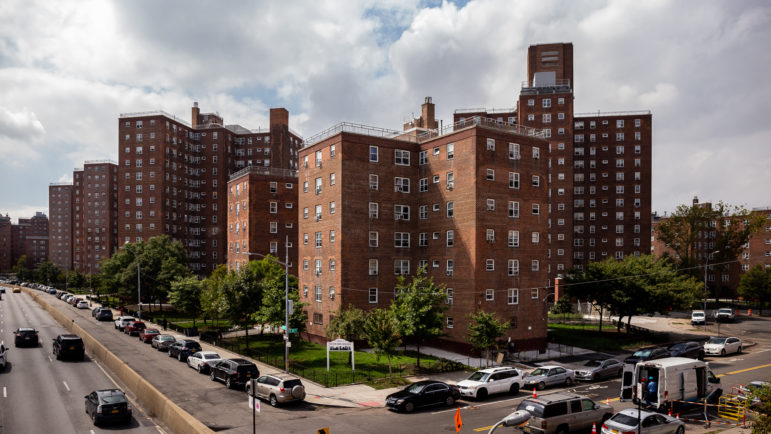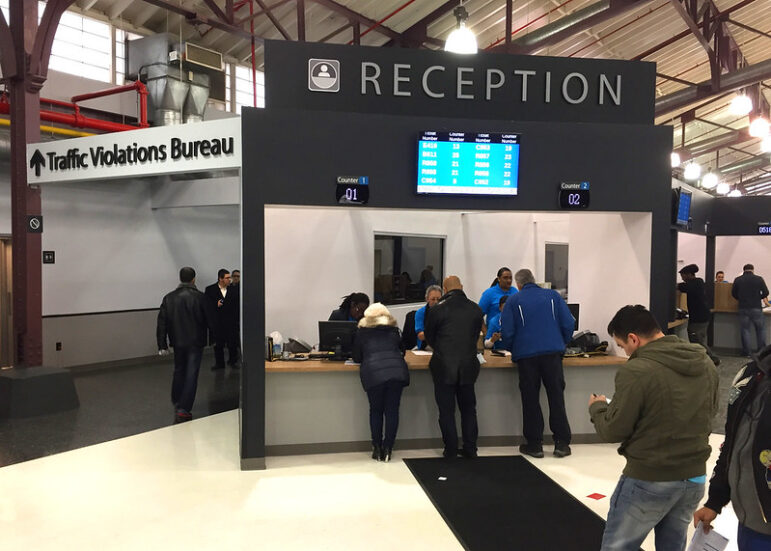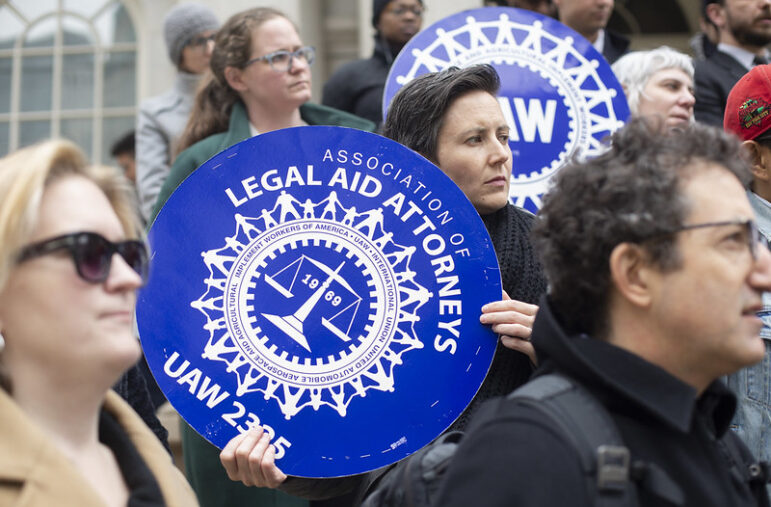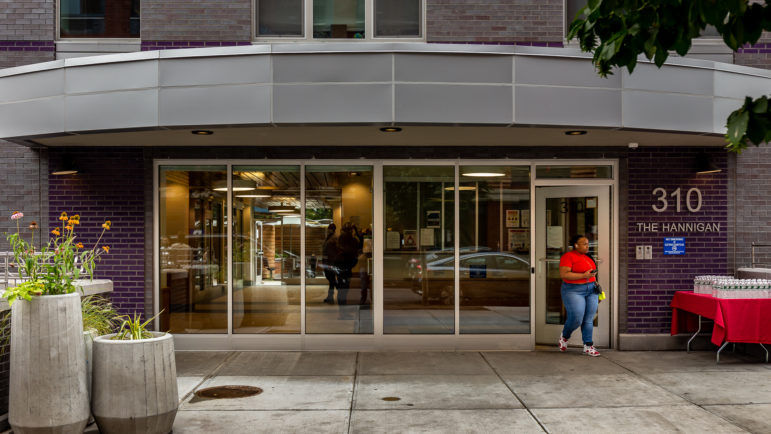“We need an all-hands-on-deck mentality to tackling quality of life issues, and the borough president should lead the charge.”
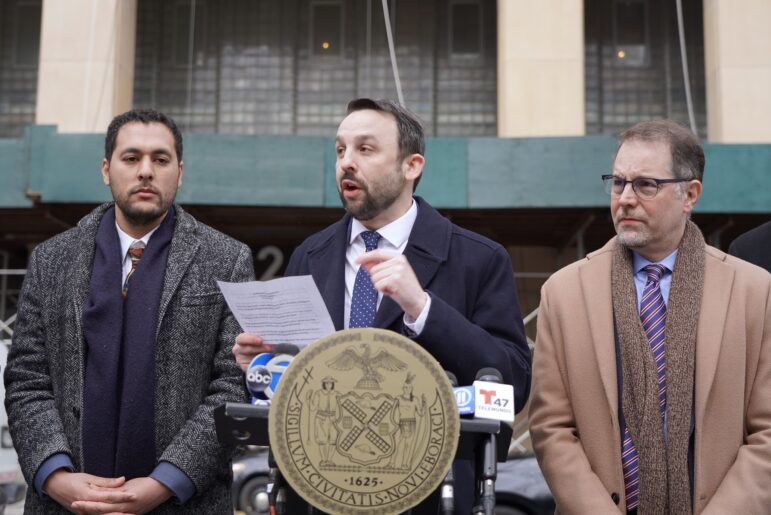
NYC Council
Councilmember Keith Powers, at center, announcing scaffolding-related legislation in 2023.Here’s some quick trivia: How many blocks are there in all of Manhattan?
Depending on which city agency you ask, the answer is either 2,935 or 2,250.
But the number on the minds of Manhattan residents is the one, two, or five blocks that they avoid because it’s too messy, too noisy, or too unsafe. That’s the number that matters most right now.
Whether it’s the unkempt streets, illegal cannabis stores, unsightly scaffolding, empty storefronts, noise pollution, or any of the other common constituent calls, these issues can pile up like bags of trash on the sidewalks. Right now, New Yorkers are clearly asking for a better sense of order in our neighborhoods.
Don’t get me wrong, we have taken real strides to solve issues that we once took for granted. New York City has finally embraced trash containerization rather than stranding our garbage on the sidewalks. I have championed bills in the City Council to end the scourge of scaffolding that hurts our street life. The City Council is cracking down on noise violations, including my noise camera law for the worst offenders. And an initiative I helped spearhead to close illegal cannabis stores has been implemented to great success.
Recently, New Yorkers received an extra bit of hope in the fight against quality of life issues with a new proposal from Police Commissioner Jessica Tisch. The announcement included the creation of a new quality of life czar and a new tracking system for these issues in the vein of COMPStat for policing. This is welcome news and I support those measures.
But if we want to truly succeed in showing New Yorkers how to improve their lives, let’s show them exactly how life is improving on those one or two blocks that bother them most.
I am proposing a plan to make that happen.
First, New Yorkers need an on-going report card on the state of their neighborhoods: measurements like cleaning their streets, quieting down their neighborhoods, removing unsightly scaffolding, responding to public safety complaints, and more. We should take the COMPStat model for quality of life and boil it down to a neighborhood level. This will empower local representatives to push for better service, show steady progress, and give us proactive ways to attack the hotspot areas hurting our neighborhoods.
Second, we need an elected official in charge of these issues. With Speaker Adrienne Adams announcing a new charter commission on reforming city government, I will be proposing measures to empower the borough president’s office to have oversight over agency performance. The job at hand is to evaluate areas in need of improvement, work with borough commissioners to better deploy resources, hold our city agencies accountable when they are not living up to their responsibilities, and keep a watchful eye on how we are doing. That’s a perfect job for a boroughwide office.
Third, we need to execute on a plan. The borough president should conduct a regular assessment with the City Council delegation on tackling these issues: new legislation similar to my bills for scaffolding and noise, a map of hotspot areas where city agencies are failing, leading quality of life cabinet meetings to tackle deficiencies, and a coordination of all offices to address these issues. We need an all-hands-on-deck mentality to tackling quality of life issues, and the borough president should lead the charge.
Here’s a tangible example: You live on a block that has overflowing trash cans, litter on the streets, and conditions that attract vermin. Aside from being unpleasant to look at, it’s a public health and safety risk. So, you call 311 to file a complaint and the Sanitation Department (DSNY) will send an inspector who can issue a ticket to the property owner who’s responsible for keeping the sidewalk in front of their property clean. But what happens when this occurs every day? Who’s tracking the complaints and pushing for more resources? Which office is in charge of proactively looking at hotspot areas?
With a functional system designed to track problems like this, the borough president could coordinate directly with DSNY on enforcement and with the Department of Health and Mental Hygiene (DOHMH) on rat abatement. The borough president and other elected officials would be able to see if there was a timely response and help deploy more resources to solve the problem. And of course, we would identify it as a location that needs ongoing assistance, not only after a 311 call happens.
With this plan, we can tell New Yorkers how we’re doing and demonstrate it with measured outcomes. At the same time, we will be able to create equity across all neighborhoods when it comes to getting the resources that everyone deserves.
As New Yorkers, we famously say “I love New York.” Well, it’s time that we show our love for every single one of our blocks, starting with implementing this pilot program in Manhattan, and ultimately expanding it to include all five boroughs.
Keith Powers is a member of the New York City Council representing District 4 and a candidate for Manhattan Borough President.


